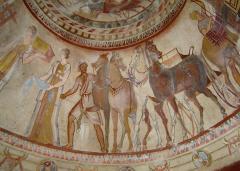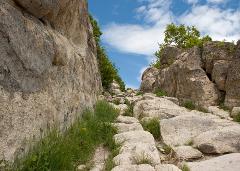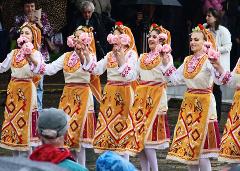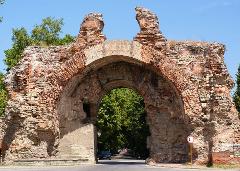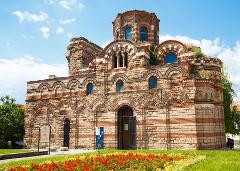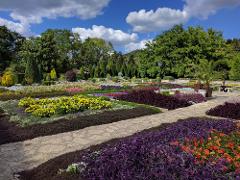Sightseeing on Bulgaria's Black Sea Coast Near Varna
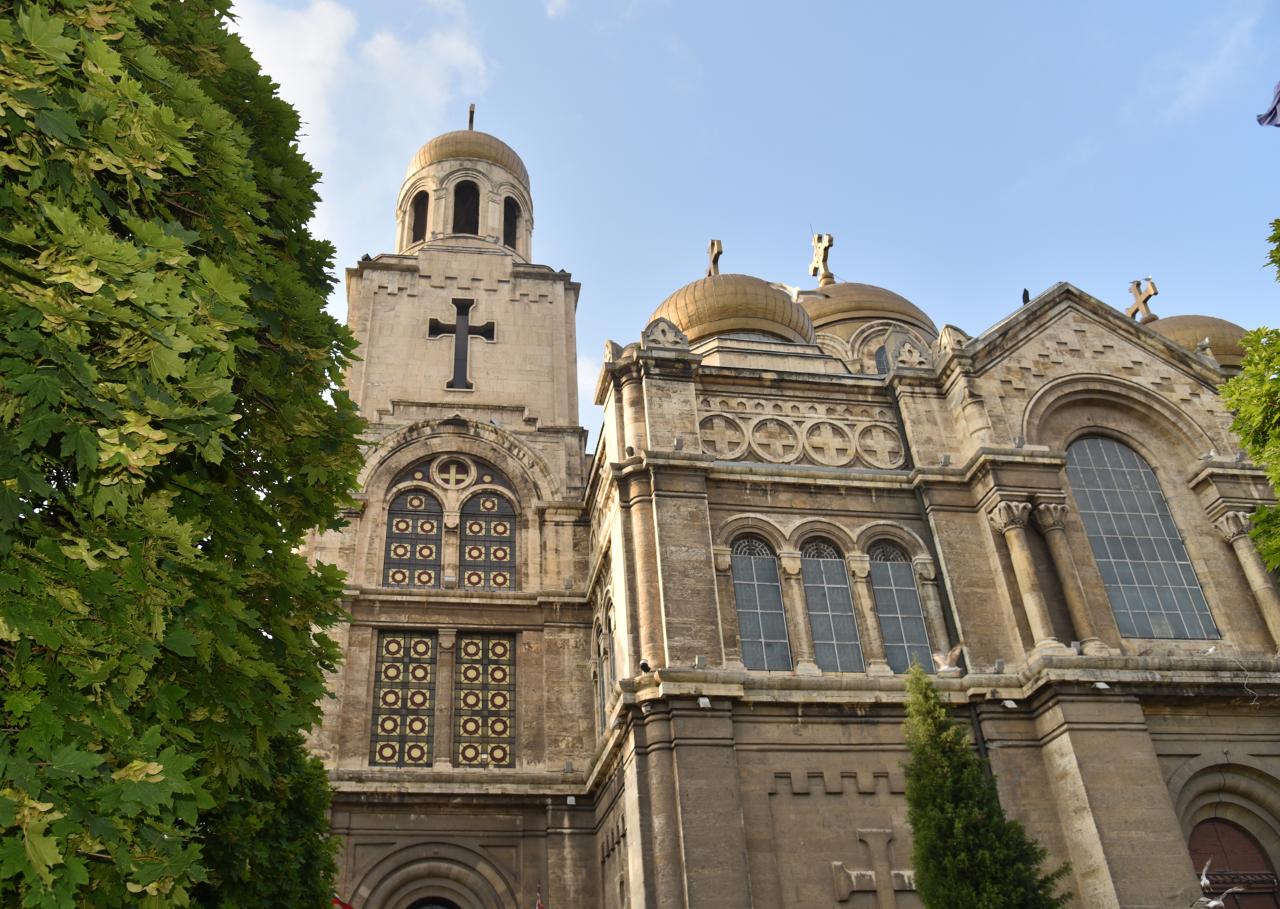
- Duration: 6 Days (approx.)
- Location: Varna
- Product code: SEEBLACKVARNA
About
A sightseeing tour of Bulgaria’s Black Sea coast’s top attractions. We’ll visit Varna – the maritime capital of Bulgaria and a major sightseeing destination. We’ll go on a trip to the nearby Balchik, famous for its beautiful botanical garden. Within a short driving distance is Cape Kaliakra, a place known for its natural beauty and rich history. We’ll have a whole day to explore Nessebar’s Old Town, a UNESCO World Heritage Site. The trip ends with a sightseeing tour of Sofia.
Highlights
• Go sightseeing in Varna and see its major sights, including the Seaside Garden
• Explore Balchik’s Botanical Garden, home to rare and endangered plant species from every corner of the world
• Visit Cape Kaliakra and its ancient Thracian fortress
• Tour Nessebar’s Old Town, a UNESCO World Heritage Site
• See Sofia’s top attractions
Description
Day 1
As soon as you arrive in Sofia we’ll be taking an internal flight to Varna Airport. Overnight in Varna.
Day 2
After breakfast, we’ll go on a sightseeing tour of Varna’s top attractions.
Its Seaside Garden is the largest in Varna and follows the Black Sea coastline. It is one of only 3 man-made natural reserves in Bulgaria, home to rare and endangered plant species. It is said that if one walks backwards over the bridge at the entrance of the main garden alley with their eyes closed and make a wish, that wish will come true. On its northern side is the Varna Dolphinarium, and on the southern side – the Varna Aquarium. The Varna Zoo and the Planetarium are also located within the garden’s bounds.
Located in the heart of Varna, the “Assumption of the Holy Mother of God” Cathedral is the largest Christian temple in Varna, and the second tallest in the country after Sofia’s St. Alexander Nevski. Its impressive size and external and internal architectural style make it one of Varna’s top attractions.
Among its many fascinating exhibits, the Varna Archeological Museum houses the oldest gold treasure in the world. Discovered in the Varna Necropolis, the jewelry dates back to 4600 BC.
Varna is home to the ruins of the largest Roman bath-house in the Balkans. The Roman Thermae date back to the 2nd century AD, and were once 20 meters tall, and the full structure used to cover an area of 7000 square meters.
Aladzha Monastery is a Medieval Orthodox Christian cave-monastery. It dates back to the 12th century, but was abandoned in the 16th century. The cambers, doorways and stairs are carved right into the rock.
Day 3
We’ll be transported from Varna to Balchik. Queen Marie of Edinburgh famously fell in love with Balchik and built a summer residence – a picturesque castle with its own Botanical Garden, home to rare plant species.
We’ll go sightseeing in the Botanical Garden, specialized in growing tropical, subtropical and unique plant species. Particularly notable is its collection of large cacti and succulents, including winter-hardy cactuses. The garden’s collection includes tree species and lemon trees that bear fruit larger than coconuts, aquatic plants, vines, ferns and endangered plants, totaling 4600 species of plant. It is part of the Index Seminum Initiative, trading plant seeds with countries from all over the world.
We’ll next visit Cape Kaliakra – a nature and archeological reserve that stretches 2 km into the sea. It is as beautiful from afar as it is from up close – its reddish cliffs plunge almost vertically into the waves, and the sea itself is a stunning backdrop for an already picturesque landscape. Cape Kaliakra is reaches far enough into the sea that one can sometimes see dolphins from its cliffs. The first to settle on this cape were a tribe of Thracians in the 6th century BC. The fort wall they built around their settlement stands to this day, as do the remains of building foundations and an impressively intact tomb and a bathhouse dating back to the 4th century BC. We’ll walk to the farthest end of the cape and visit the chapel. After that we’ll sit down for lunch at the restaurant and head back to Varna.
Day 4
This tour takes us to Nessebar’s Old Town, the entirety of which is a registered UNESCO World Heritage Site. The Old Town is on a small peninsula that was once the location of the ancient Thracian settlement Mesambria Pontica. On the bridge that leads from the New Nessebar to the Old Nessebar stands an authentic windmill that dates back to Ottoman times, and beyond it – the Old Town itself. Nessebar has a history of over 3200 years, making it one of the most ancient settlements in Europe.
The Old Nessebar is an architectural reserve made up of houses in the Bulgarian Revival Period style with a unique Nessebar regional twist to it. The ruins of an ancient Roman wall wind through parts of the Old Town. One of its main attractions are its churches, the oldest of which was built in the 4th century AD.
Built in the 13th century, the Church of Christ Pantocrator is most notable for its intricate architecture. With ornamented columns and arches, it belongs to the Byzantine architectural style. It is situated in a small park near one of the entrances to the Old Town and is usually the first sight one sees as they enter the Old Town proper.
St. Stefan Church was built in the 11th century out of stone and brick. It is known for its ornate exterior, a preserved 16th century iconostasis and fascinatingly detailed wall murals. The wall paintings depict over 1000 human figures in 258 compositions.
Even amongst the many stunning examples of church architecture in Nessebar, the Church of St. Sofia (also known as Hagia Sofia) is located in the very heart of the Old Town on the site of its former central square. Built in the 4th century AD, now collapsed, with only its exterior walls remaining, it is no less impressive – its imposing size and interesting shape speaks of its significance during its hayday, and it stands out against the Revival Period houses surrounding it in a way that never fails to draw one’s attention.
The Church of the Holy Saviour or Sveti Spas looks unremarkable from the outside, but inside the walls are covered from top to bottom with detailed and well-preserved and restored wall murals from the 17th century.
We’ll have time to browse the many market stalls that line the cobbled streets of nessebar’s Old Town and buy souvenirs.
After that, we’ll return to Varna.
Day 5
Early in the morning, we leave for Sofia.
On this day, we’ll go on a sightseeing tour of Sofia’s top attractions. Its busy streets, the beautiful Baroque architecture in the Center and the park possess a lively charm that leaves you eager to explore, but the monuments and landmarks it is most famous for deserve our full attention.
The Saint Alexander Nevsky Cathedral is one of the largest Orthodox Christian cathedrals in the world and the second largest on the Balkan Peninsula. Its impressive size and intricate design mark it as one of the most stunning architectural marvels in Bulgaria and Sofia’s most recognizable landmark.
The Saint Sophia Basilica is a red-brick church is stands atop the foundations of a sacred temple built in Roman times. The huge burial site under its floor allows visitors of the church to explore its catacombs and get lost in a labyrinth of ancient tombs and corridors.
The Church of St. Nicholas the Miracle-Worker is a beautiful golden-domed church designed in the Russian Revival Style. Visually, it is unlike any other Orthodox church in Bulgaria. It is believed to be able to grant wishes.
The Ivan Vazov National Theatre is an example of neoclassical architecture is so spectacular that you will want to carry the memory home with you.
The Church of St. George, built by the Romans is in the 4th century, is an early Christian red brick rotunda that is considered the oldest building in Sofia.
The bustling Vitosha Shopping Street perfectly embodies the dynamic atmosphere of the capital of Bulgaria. Overnight in Sofia.
Day 6
Departure from Sofia Airport.


